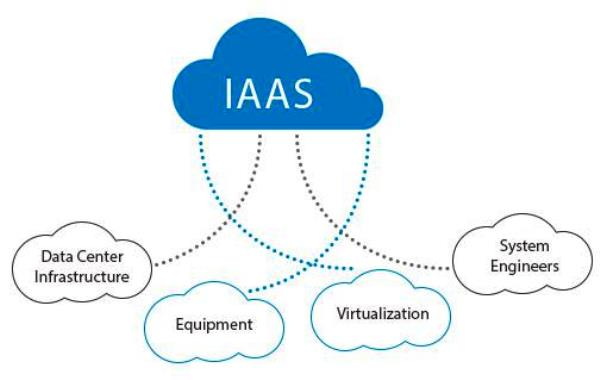IAAS

IAAS ( Infrastructure As A Service ) is one of the main services as offered by the cloud computing. IAAS convers all hosting providers which offers internal infrastructure of the system.
Infrastructure as a service (IaaS) is a form of cloud computing that provides virtualized computing resources over the internet. IaaS is one of the three main categories of cloud computing services, alongside software as a service (SaaS) and platform as a service (PaaS).
In the IaaS model, the cloud provider manages IT infrastructures such as storage, server and networking resources, and delivers them to subscriber organizations via virtual machines accessible through the internet. IaaS can have many benefits for organizations, such as potentially making workloads faster, easier, more flexible and more cost efficient.
IaaS architecture
In an IaaS service model, a cloud provider hosts the infrastructure components that are traditionally present in an on-premises data center. This includes servers, storage and networking hardware, as well as the virtualization or hypervisor layer.
IaaS providers also supply a range of services to accompany those infrastructure components. These can include the following:
- Detailed billing
- Monitoring
- Log access
- Security
- Load balancing
- Clustering
- Storage resiliency, such as backup, replication and recovery.
How does IaaS work?
IaaS customers access resources and services through a wide area network (WAN), such as the internet, and can use the cloud provider's services to install the remaining elements of an application stack. For example, the user can log in to the IaaS platform to create virtual machines (VMs); install operating systems in each VM; deploy middleware, such as databases; create storage buckets for workloads and backups; and install the enterprise workload into that VM. Customers can then use the provider's services to track costs, monitor performance, balance network traffic, troubleshoot application issues and manage disaster recovery.
Any cloud computing model requires the participation of a provider. The provider is often a third-party organization that specializes in selling IaaS. Amazon Web Services (AWS) and Google Cloud Platform (GCP) are examples of independent IaaS providers. A business might also opt to deploy a private cloud, becoming its own provider of infrastructure services
IaaS advantages
1. Organizations choose IaaS because it is often easier, faster and more cost-efficient to operate a workload without having to buy, manage and support the underlying infrastructure. With IaaS, a business can simply rent or lease that infrastructure from another business.
2. IaaS is an effective cloud service model for workloads that are temporary, experimental or that change unexpectedly. For example, if a business is developing a new software product, it might be more cost-effective to host and test the application using an IaaS provider.
3. Once the new software is tested and refined, the business can remove it from the IaaS environment for a more traditional, in-house deployment. Conversely, the business could commit that piece of software to a long-term IaaS deployment if the costs of a long-term commitment are less.
4. In general, IaaS customers pay on a per-user basis, typically by the hour, week or month. Some IaaS providers also charge customers based on the amount of virtual machine space they use. This pay-as-you-go model eliminates the capital expense of deploying in-house hardware and software.
5. When a business cannot use third-party providers, a private cloud built on premises can still offer the control and scalability of IaaS -- though the cost benefits no longer apply.
IaaS disadvantages
1. Despite its flexible, pay-as-you-go model, IaaS billing can be a problem for some businesses. Cloud billing is extremely granular, and it is broken out to reflect the precise usage of services. It is common for users to experience sticker shock -- or finding costs to be higher than expected -- when reviewing the bills for every resource and service involved in application deployment. Users should monitor their IaaS environments and bills closely to understand how IaaS is being used and to avoid being charged for unauthorized services.
2. Insight is another common problem for IaaS users. Because IaaS providers own the infrastructure, the details of their infrastructure configuration and performance are rarely transparent to IaaS users. This lack of transparency can make systems management and monitoring more difficult for users.
3. IaaS users are also concerned about service resilience. The workload's availability and performance are highly dependent on the provider. If an IaaS provider experiences network bottlenecks or any form of internal or external downtime, the users' workloads will be affected. In addition, because IaaS is a multi-tenant architecture, the noisy neighbor issue can negatively impact users' workloads.
You may also Find this interesting
IaaS - Infrastructure As A Service
IAAS PAAS SAAS A comparative Study
Security Issues in Cloud Computing

Leave Comment